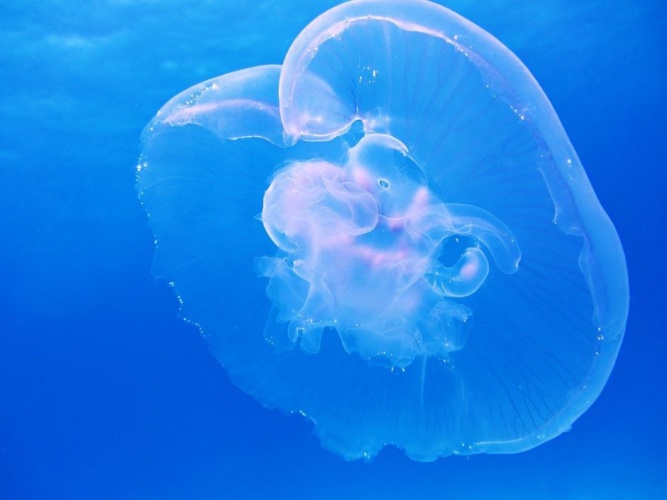The research from the Universities of Southampton and Edinburgh demonstrates that the new underwater robot can swim as quickly and efficiently as the squid and jellyfish which inspired its design. Their findings are published in Science Robotics.
In a statement, co-author Dr Francesco Giorgio-Serchi, lecturer and Chancellor's Fellow, at the School of Engineering, Edinburgh University, said: "The fascination for organisms such as squid, jellyfish and octopuses has been growing enormously because they are quite unique in that their lack of supportive skeletal structure does not prevent them from outstanding feats of swimming."
Untethered squid robot could help study coral reefs
Pulsing prosthetic gives jellyfish super speed
The new robot was developed at the Southampton University and is the first submersible to demonstrate the benefits of using resonance for underwater propulsion.
The mechanism is said to consist of a rubber membrane enclosing eight 3D-printed flexible ribs, which form a 'propulsive bell'. A small piston in the top half of the robot taps this bell repeatedly so that it expands and then springs back. This mimics a jellyfish's swimming technique and produced the jets of fluid to propel the robot through the water. When the piston operates at with the correct resonant frequency the robot can move at one body length per second and match the efficiency of the Aurelia aurita jellyfish.
The latest tests show the new robot is ten to fifty times more efficient than typical small underwater vehicles powered by propellers. This increased efficiency, combined with the additional benefits of the robot's soft, flexible exterior would make a candidate for for operating near sensitive environments such as a coral reef or archaeological sites.

Co-author Thierry Bujard, a Masters student in Naval Architecture at the Southampton University, said: "Previous attempts to propel underwater robots with jetting systems have involved pushing water through a rigid tube but we wanted to take it further so we brought in elasticity and resonance to mimic biology. I was really surprised by the results, I was confident that the design would work but the efficiency of the robot was much greater than I expected."
Dr Gabriel Weymouth, Associate Professor in the University's School of Engineering, who supervised the project added, "The great thing about using resonance is that we can achieve large vibrations of the propulsive bell with a very small amount of power; we just need to poke it out of shape and let the elasticity and inertia do the rest. This has allowed us to unlock the efficiency of propulsion used by sea creatures that use jets to swim.
"The last decade has seen a surge in research into flexible and biologically-inspired robots, such as Boston Dynamic's "Big Dog", because they can be much more versatile than standard industry robots. This research demonstrates that these concepts can also be applied to underwater robotics.
"There are still many challenges and exciting possibilities to explore with soft underwater robotic technologies. We are now looking to extend the concept behind this robot to a fully manoeuvrable and autonomous underwater vehicle capable of sensing and navigating its environment."




Poll: Should the UK’s railways be renationalised?
The term innovation is bandied about in relation to rail almost as a mantra. Everything has to be innovative. There is precious little evidence of...